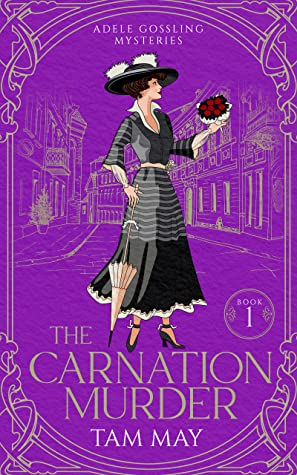Photo Credit: Polarity masks, published 7 July 2015: johnhain/Pixabay/ Pixabay License
Fans of my work know that since I began publishing historical fiction with The Specter in 2019, I’ve been talking about how my passion for history lies more in the social and psychological aspects of history than in the events. I wrote not long ago on my blog about what social history is and how I use it in my fiction. Now I’m tackling psychological history and how it plays a role in my fiction.
Social history is essentially putting the human element back into history. Psychological history is, then, putting the emotional element back into history. At first glance, making these distinctions might seem redundant. After all, just as history happens to humans, humans have emotions, so, therefore, emotions are always present in history, right?
Well, yes, but it’s more complicated than that, I think. Just as social history brings in the people that were traditionally left out (like, African Americans, and Native Americans), psychological history tells us how they felt about history --- their own and their ancestors. They react not only physically to what is happening around them (just as we do today) but also emotionally and mentally. History books often tell us what happened in great detail so we get a sense of being in that moment in time, and they also tell us who it happened to. But to complete the picture and really into the past, we have to know how those events made those people feel and how they reacted to them and how they changed their lives (and, by extension, ours).
It’s
easy to see why history books can’t give us this. After all, we can’t really
know for sure how people felt about what was going on around them, whether those
feelings were about the after-effects of World War I, the stock market crash of
1929, or the first exploration of the moon in the 1960s. We can only guess by reading
personal and fictional accounts.
I like to take things one step further and go beneath the surface, looking at the psychological reality of my characters as they live and breathe their time. I think it’s especially important that they explore their own past to reveal what’s under the iceberg. Only then, we can really get a sense of how they felt in their own time and find ourselves in their lives.
This is just what I do with the Waxwood Series, which is about not only the historical shifts that happen to the Alderdice family in the last years of the 19th century but also their more personal journey from blind convention to emotional growth and understanding. The protagonist, Vivian Alderdice, finds herself as a woman during turbulent times in America, discovering truths about her family and herself that she must face. It becomes a rough but satisfying personal journey for her.
My upcoming series works a little differently, as it’s a cozy historical mystery. But the past still leaves its mark on the protagonist, Adele Gossling. As a New Woman of the turn-of-the-century, she both embraces the freedoms that young women were beginning to enjoy at that time while still hesitating, caught in a virtual time warp when she moves from the big city to a small town.
You can read more about my upcoming series, the Paper Chase Mysteries, here.
And
here’s a little more about Dandelions, the last book of my Waxwood Series,
which came out in December 2020:
She had more in common with her nemesis than she wanted to believe…
For Vivian Alderdice,
the 20th century begins with a
new start. Now a working girl and progressive reformer like her friend, Nettie
Grace, she has forsaken the Gilded Age opulence of Nob Hill for the humbler
surroundings of Waxwood’s commercial district. Rather than whittle away her days
with other wealthy young women in gossip, parties, and flirtations, she sells
talcum powder and strawberry sodas to customers at Nettie’s Drugstore and helps
the poor to read at the Waxwood Women’s Lending Library and Reading Room.
But sometimes the scars
of the past leave bitterness behind …
Harland Stevens, the man
who ruined her brother’s life two years before, appears like another specter in
Vivian’s life and, in spite of herself, Vivian is compelled to help him escape
from a hell of his own.
Purchase Dandelions at your favorite online bookstore here.
Interesting in knowing more about the series? You can check out this page.
Tam May started writing
when she was fourteen, and writing became her voice. She loves history and
wants readers to love it too, so she writes historical fiction that lives and
breathes a world of the past. She fell in love with San Francisco and its
rich history when she learned about the city’s resilience and rebirth after the
1906 earthquake and fire during a walking tour. She grew up in the United
States and earned a B.A. and M.A. in English. She worked as an English college
instructor, interesting a class of wary freshmen in Henry James’ fiction. She
also worked as an EFL teacher, using literature to teach English to business
professionals before she became a full-time writer.
Her
book Lessons From My Mother’s Life debuted
at #1 on Amazon in the Historical Fiction Short Stories category. She’s
also published a Gilded age family saga titled The Waxwood Series. Set in Northern California at the close of the
19th century, the series tells the story of the Alderdices, a wealthy San
Francisco family crumbling amid revolutionary changes and shifting values in
America’s Gilded Age. Tam’s
current project delves into historical mystery fiction. The Paper Chase
Mysteries is set in Northern
California at the turn of the 20th century and features amateur sleuth and
epistolary expert Adele Gossling, a young, progressive, and independent young
woman whose talent for solving crimes comes into direct conflict with her
new community, where people are apt to prefer the Victorian women over the new century’s New Woman.
Tam lives in Texas but
calls San Francisco and the Bay Area “home”. When she’s not writing, she’s
reading classic literature, watching classic films, cross-stitching, or cooking
yummy vegetarian dishes.
For more information
about Tam May and her work, check out her website at www.tammayauthor.com. You can
also sign up for her newsletter, which offers glimpses into the nooks and crannies of history that aren't
in the history books and subscriber-exclusive
sneak peeks, giveaways, and polls. plus a free short story.
To connect
with Tam May:
Website: https://tammayauthor.com/
Blog: https://tammayauthor.com/category/thedreambookblog
Facebook: https://www.facebook.com/tammayauthor/
Twitter: https://twitter.com/tammayauthor
Pinterest: https://www.pinterest.com/tammayauthor/
Instragram: https://www.instagram.com/tammayauthor/
Goodreads Author Page: https://www.goodreads.com/author/show/16111197.Tam_May
Amazon Author Page: https://www.amazon.com/Tam-May/e/B01N7BQZ9Y/
BookBub Author Page: https://www.bookbub.com/authors/tam-may















![False Fathers: Waxwood Series: Book 2 by [May, Tam]](https://images-na.ssl-images-amazon.com/images/I/41RK85apzRL.jpg)




![The Order of Actaeon: Waxwood Series: Book 1 by [May, Tam]](https://images-na.ssl-images-amazon.com/images/I/51utF-xJsHL.jpg)